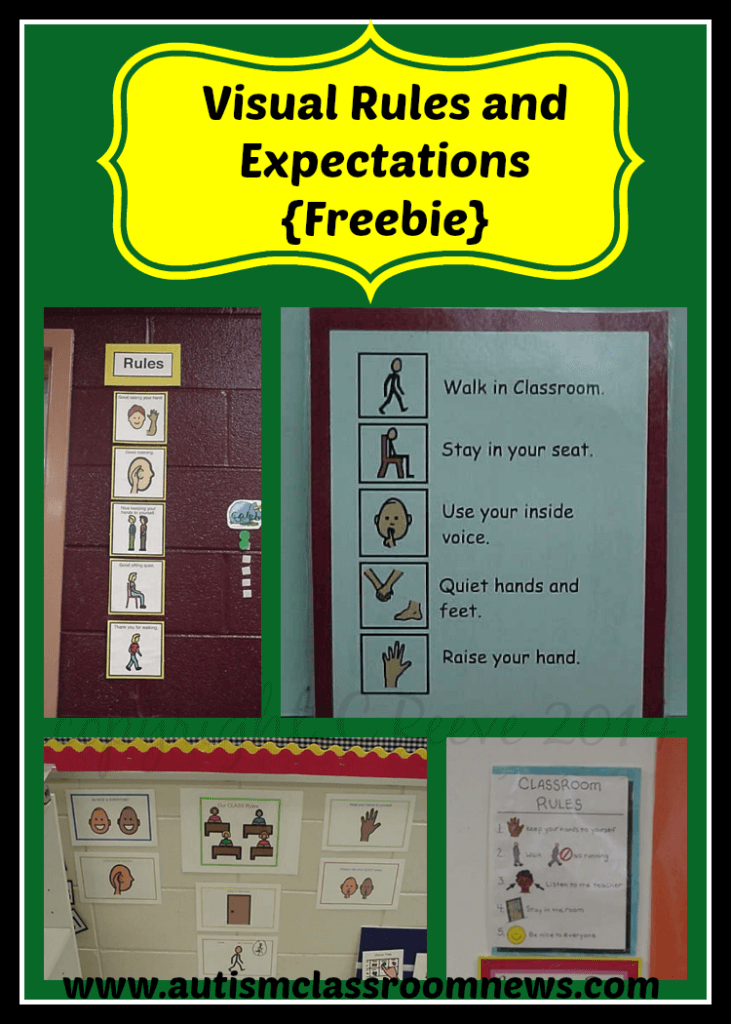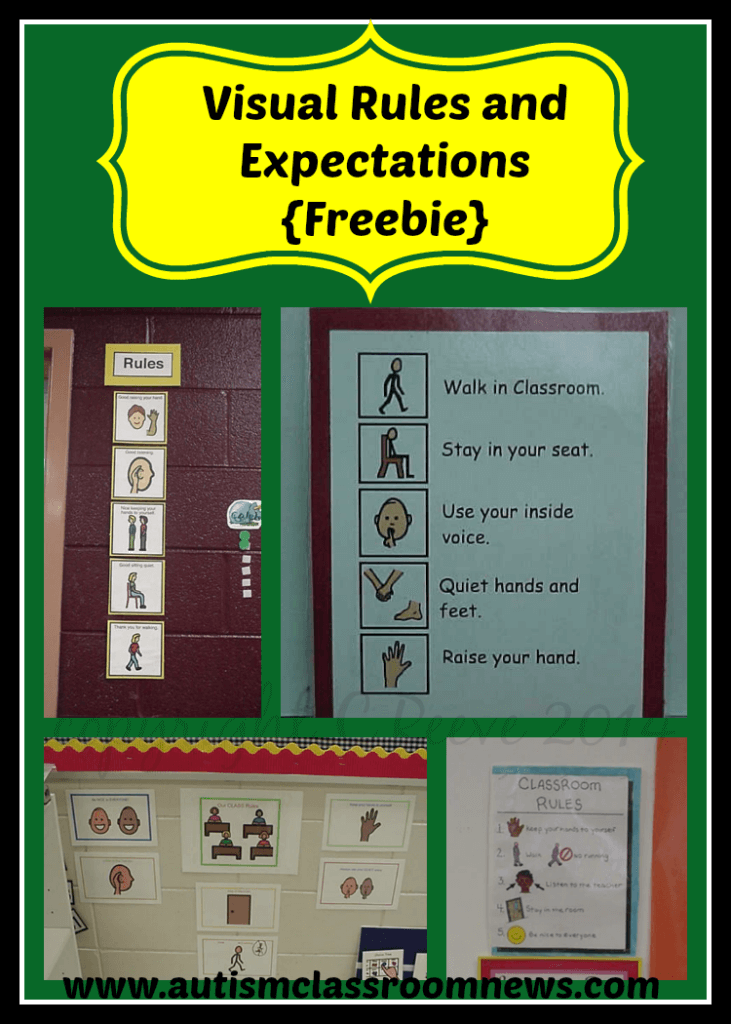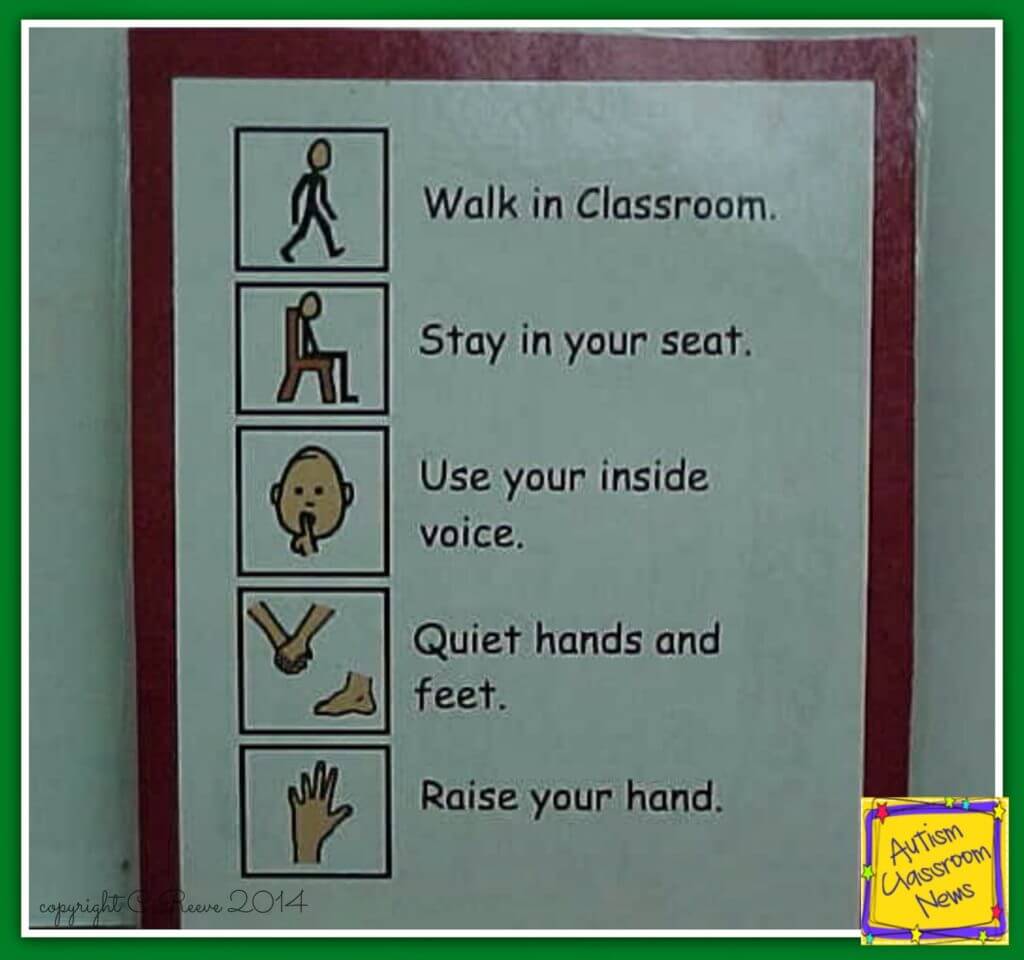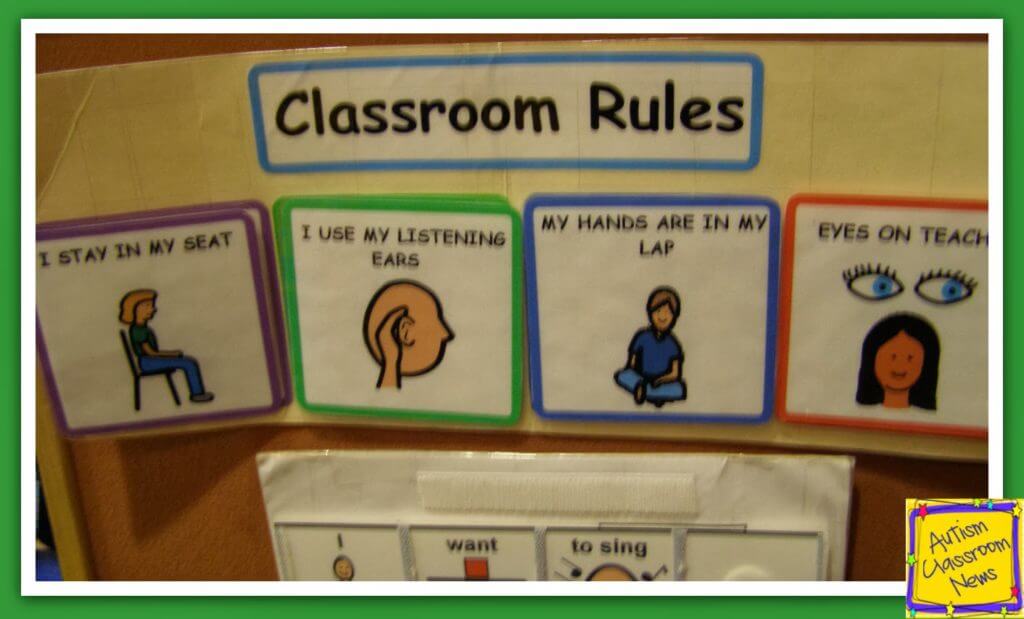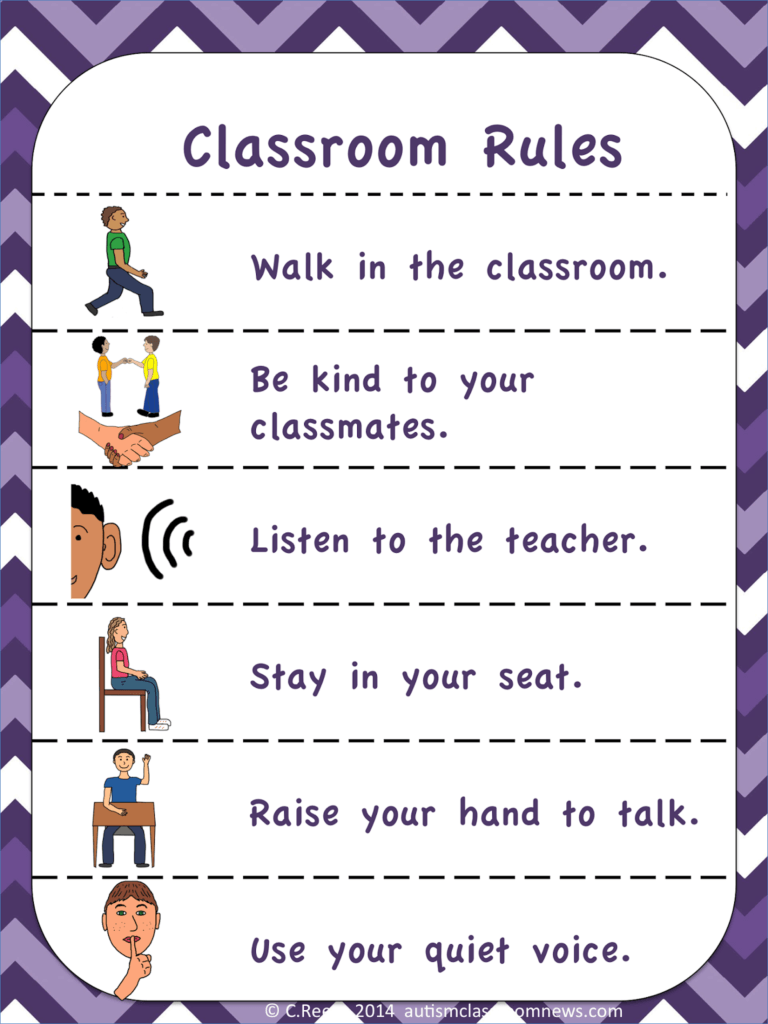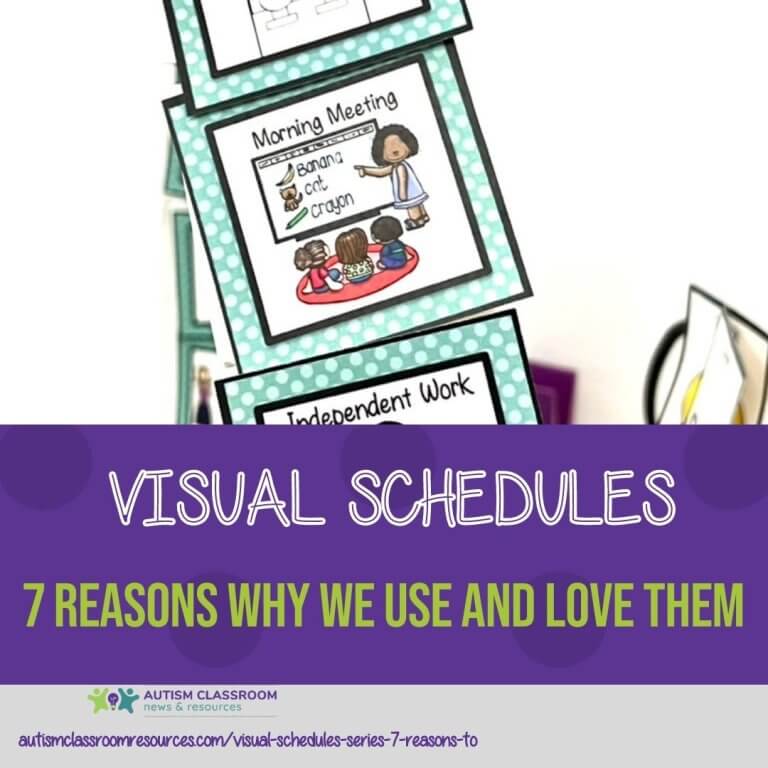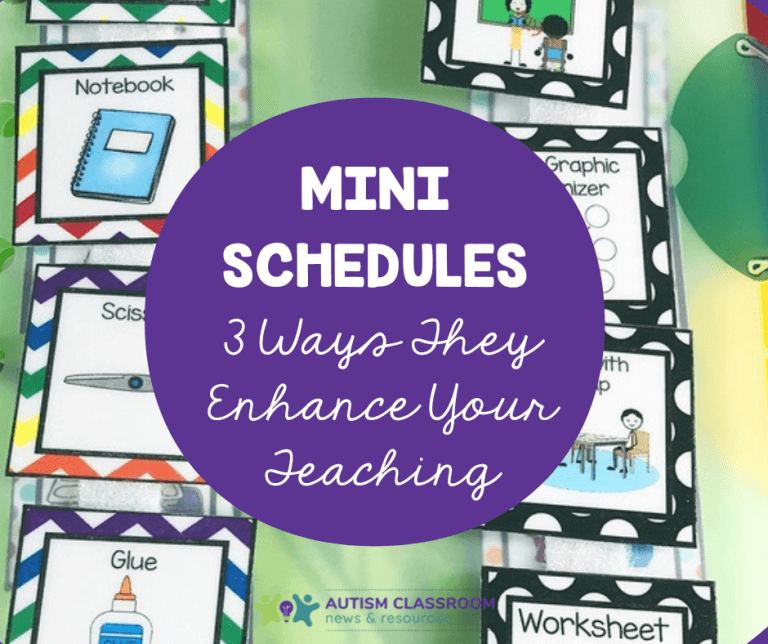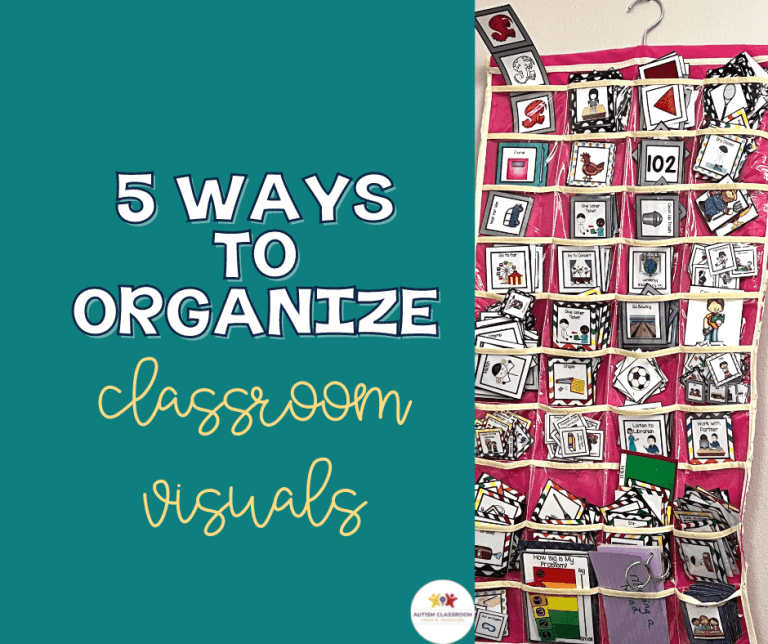Sharing is caring!
Today I am linking up with Rae over at Mindful Rambles for a Classroom Management Linky. She has a great post here for general rules for classroom management, but wait….before you leave….stay tuned because I have a freebie for you at the end of this post. I wanted to talk about the importance of having clear classroom rules and expectations. As Rae notes it is important to make sure that you are showing students the expectations of the class, whether it’s writing up the guideline of assignments in a high school classroom or sharing expectations of overall behavior in a preschool class. For students with autism, communication issues, or any students who are not great readers, pictures become an important part of the rules. Some type of cue to illustrate the rules really helps students to understand the expectation. It also is useful because you can use the same pictures as a cue to remind students of the correct behaviors. These are some considerations in creating your classroom rules.
1. Make them positive.
I know that what you are trying to do is to get the student NOT to misbehave. However, typically, as soon as you tell someone not to do something, that’s all they can think to do. So, you are better off phrasing your rules positively with the behaviors you want to see. This also gets the staff in the habit of telling the students what to do instead of what not to do, which is the best way to redirect. It may take some brainstorming to think about how to be positive about some behaviors and it may not always be possible. However, think about what the student should do instead of the behavior and that might help. For instance, in the set below, we used “quiet hands and feet” instead of no hitting or kicking.
2. Sometimes it’s helpful to have the students help make the rules.
I cannot find this picture anywhere, but I once had a kindergarten classroom that you knew as soon as you saw them that the students helped to make the rules. The first rule was “You should not rip, tear, write in, or throw library books.” Clearly this was a group of kindergarteners that some librarian really made an impression on. You could also see how hard the teacher worked with the class to reign in those rules and add in the ones she wanted. The great things about the rules in this class, though, were that the teacher could very effectively refer to them as “Our rules” as in, “what do our rules say about being kind to our friends?” The students had an investment in the rules and it helped them to think about and clearly understand the expectations as well.
3. You might have more than one set of rules.
This is a great set of rules from the Baudhuin preschool program at Nova Southeastern University where I used to work. This teacher had classroom rules but this set was really just for circle time. You might have specific rules at the computer station that include taking turns and wearing headphones. You might have recess rules, that are different than the classroom since obviously you would allow running at recess but not in the classroom. Not only does this help students know the expectations in different activities, they also learn that there are different expectations in different situations. You can also use that as an opportunity to talk about how different activities have different expectations.
4. Tie your rules into reinforcement / classroom management systems
You can easily use your rules to define the behaviors you want to reinforce with a behavioral system. For instance, at the end of each activity you could review the rules and give a token, point, or reinforcer if the students followed all the rules for that activity. For some students you may have individualized rules and individualized systems and for others you can use the classroom ones. It’s easy to use the classroom rules with something like token systems. Click here for free token boards.
So, how do you use rules in your classroom? Do you have visual supports if you teach students who are not great readers? If you think that could be helpful, I’ve got you covered with a free set of general classroom rules with visual supports. Just click on the picture below to download them.

